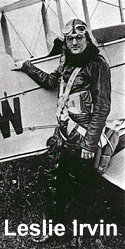Special Days Every Month
Celebrate and learn about special days
every day of the year!
|
First Free Fall Parachute Jump
19 April 1919 |
|||
Brief History of Parachutes Parachutes with a rigid frames like open umbrellas. c. 1483 Parachutes first thought of and sketched by Leonardo Da Vinci 1783 First practical parachute demonstrated by Sebastien Lenormand. 1793 Jean Pierre Blanchard first person to be recorded to actually use a parachute for an emergency situation No rigid frame 1797 Andrew Garnerin, designed the first parachute air vent and was the first person recorded in history to jump with a parachute without a rigid frame. 1887 Captain Thomas Baldwin invented the first parachute harness 1890 Paul Letteman and Kathchen Paulus invented the method of folding or packing the parachute in a knapsac to be worn on the back before it was to be released. Kathchen Paulus was the person behind the intentional breakaway invention, which is when one small parachute opens first and pulls open the main parachute. 1911 and in 1914 Grant Morton and Captain Albert Berry parachuted from an airplane Georgia "Tiny" Broadwick made the first freefall jump.
Also on this day …. 23 April 1924: The original Wembley Stadium, known as the Empire Stadium, was opened by King George V s (the present Wembley Stadium opened in 2007).
|
See Teaching Resources for today’s date
Back to Facts of the Day Calendar
Jan | Feb | Mar | Apr | May | Jun | Jul | Aug | Sept | Oct | Nov | Dec
 © Copyright – please read © Copyright – please read All the materials on these pages are free for homework and classroom use only. You may not redistribute, sell or place the content of this page on any other website or blog without written permission from the . projectbritain.com | primaryhomeworkhelp.co.uk |
© Copyright 2013
is the creator of the Woodlands Resources section of the Woodlands Junior website.
The two websites projectbritain.com and primaryhomeworkhelp.co.uk
are the new homes for the Woodlands Resources.
left Woodlands in 2003 to work in Kent schools as an ICT Consulatant.
She now teaches computers at The Granville School and St. John’s Primary School in Sevenoaks Kent.
Woodlands Junior Homework Help new website
born on this day what happened on this day famous birthdays interesting facts did you know Interesting Calendar Facts.






